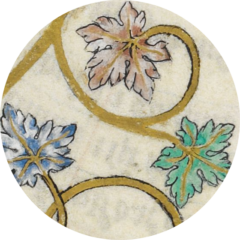Research
I study the interconnections between literary form, the environment, and material embodiment in medieval English literature. My book-length projects are on this page; for my articles and book chapters, see my publications.
Literary Nature: Trees and the Making of Vernacular Poetry in Late Medieval England
My first book project, Literary Nature: Trees and the Making of Vernacular Poetry in Late Medieval England, uncovers the constitutive role of the figure of the tree in late medieval English poetry. The manifold affordances of trees—including both the material reality of actual trees and the discursive and intellectual history of the tree figure—in late medieval England provide a conceptual, formal, and material ground for poets to theorize on the character and purpose of poetry. I argue that the tree figure, by presenting these theorizations as natural, allows late medieval English poets to consolidate vernacular poetry into a tradition. I establish the polyvalent adaptations of the tree image made by English poets such as William Langland, Geoffrey Chaucer, John Lydgate, and John Skelton, and argue that their choices reveal the interconnection of poetry, nature, and form in the late medieval period. Crucially, the strategic choices these poets make when using aspects of the tree figure to examine poetry’s relationship to the natural world reveal a shift in this relationship over time. While poets such as Langland and Chaucer, writing at the end of the fourteenth century, turn to the tree figure and its natural and cultural associations to justify the meaning-making prowess of vernacular poetry, by the beginnings of the sixteenth century, poets have styled English poetry itself as a generator of naturalized meaning. Ultimately, early modern writers inherit a literary tradition in which English poetry has been transformed into a natural and national resource by their predecessors.
Planting Chastity: Desire and the Natural Environment in Medieval English Poetry
In my second book project, I explore medieval poets’ representations of the permeability of human sexuality and desire to the plants and environments of the natural world in works including Geoffrey Chaucer’s Second Nun’s Tale of the Canterbury Tales and Parliament of Fowls, John Gower’s Confessio Amantis, and William Langland’s Piers Plowman. In the process, I offer a crucial chapter in the history of the development of compulsory sexuality, a critical term from asexuality studies that describes how a subject is constituted as fully human by the experience of sexual desire. To do so, my project traces the outsize influence of thirteenth-century French poem The Romance of the Rose on Middle English literature’s configurations of human sexuality. This poem bequeathed to English poetry an enduring connection between desire and the natural world by inscribing reproductive human sexual behavior as contiguous with nature, and homosexuality and chastity as deviations from it. I show that fourteenth century medieval English poets’ representations of plant life and human sexuality, by contrast, craft a lack of desire as natural while simultaneously restricting the ability to occupy this position to certain configurations of body and environment. Planting Chastity weaves together literary studies, queer theory and asexuality studies, and medieval scientific and medical discourses about plants to explore how sexualities and desires are constituted as natural or unnatural.
